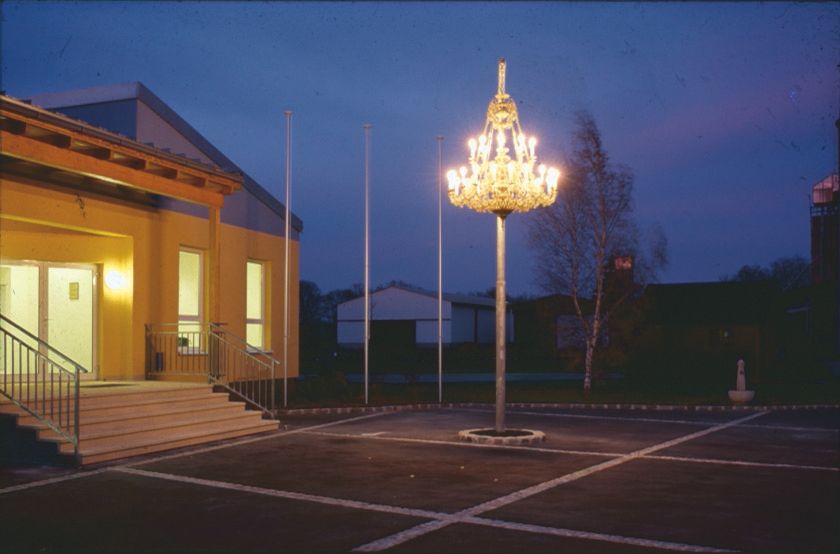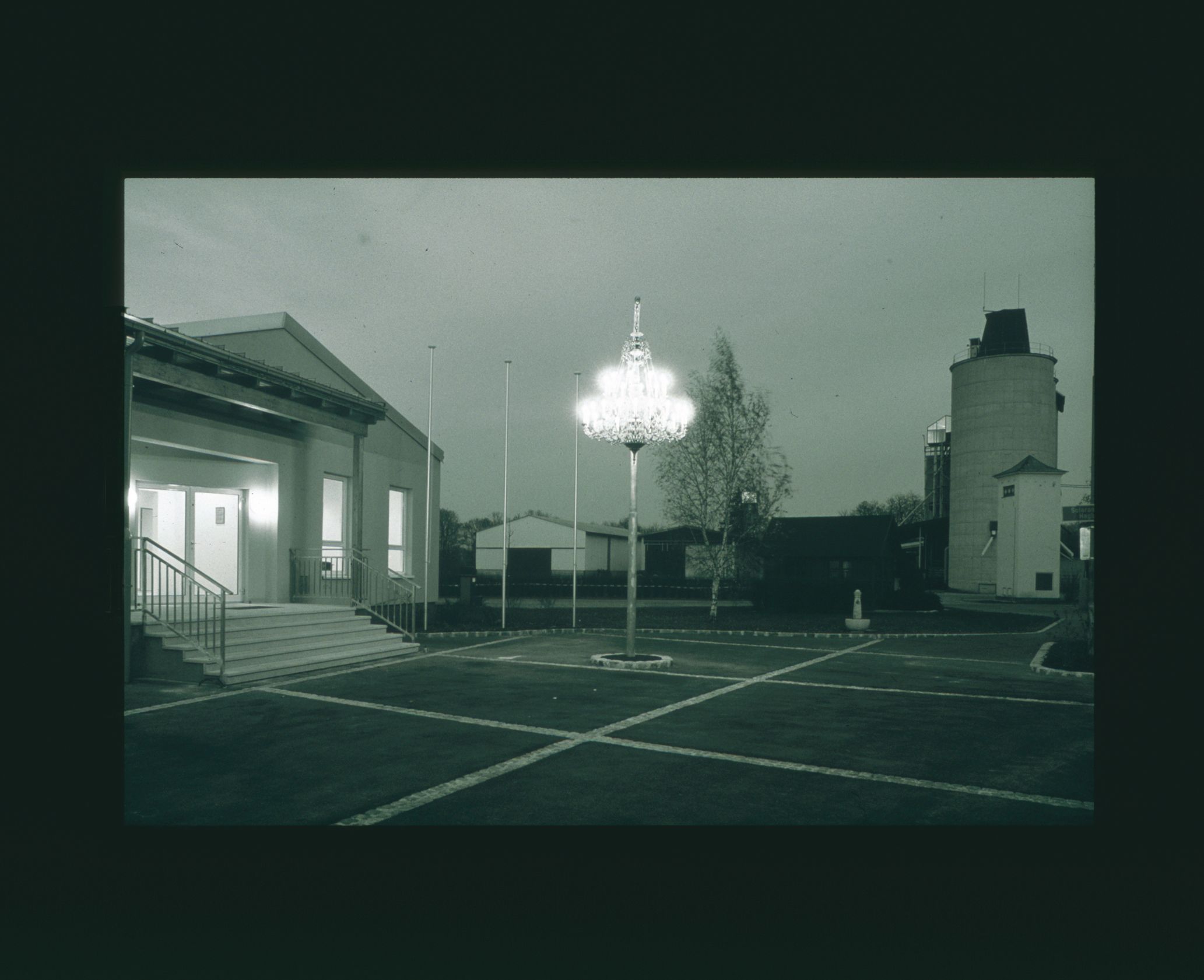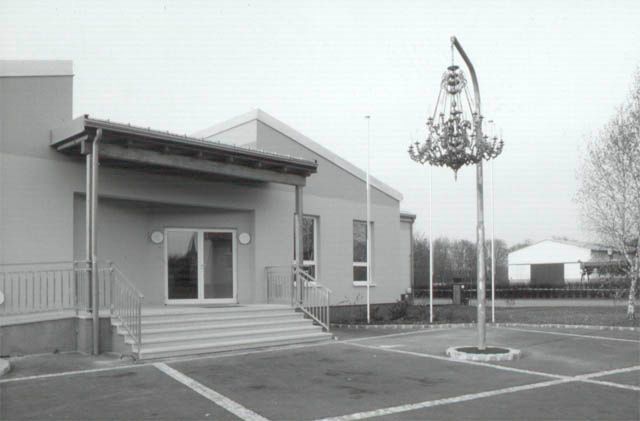Werner Reiterer
:
Chandelier
Back
Information
A chandelier was removed from its historical and architectural context and placed on the front square of the Gerhaus cultural centre. Since the light object is only supposed to be switched on when something is going on in the building, it also underscores the activities at the centre.
The domestification of light represents one of the incisive development steps in the history of mankind. The possibility of extending day into night meant enormous economical, cultural and social potential for the individual human being. In connection with my own intervention, it should be noted that historically speaking light was also a commodity of the powerful. The sources of light, often elaborately designed, always reflected the power of the lords of the castle. Industrialization, however, made light a generally accessible good. This development also facilitated the growth of cultural activities. Once the chandelier was removed from its historical and architectural context and placed on the front square of the Gerhaus cultural centre, a displaced luminous body created a mental bridge between the historical givens of culture as something cultivated by a privileged upper class on the one hand and more contemporary options open to the public at large on the other. As a lamp among lamps in public space, its elaborate design breaks with the functionalist image of the city. Since the light object is only supposed to be switched on when something is going on in the building, it also underscores the activities at the centre.
(Werner Reiterer)



